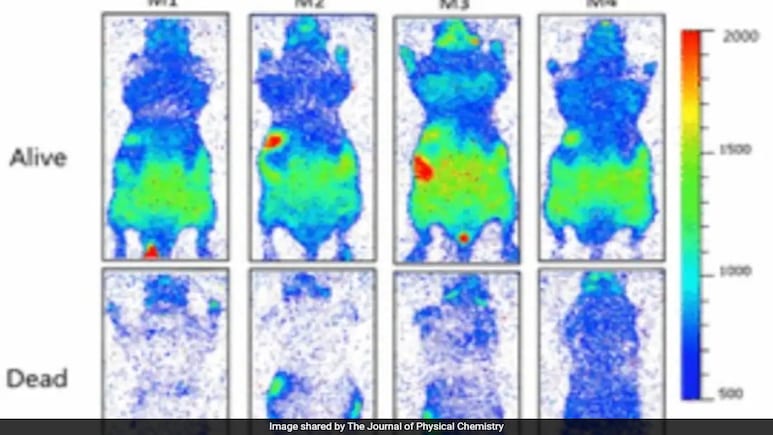
- Human bodies emit a faint visible light that ceases upon death according to new research
- The study measured ultraweak photon emission in live mice and plants using sensitive cameras
- Photon emissions dropped sharply after death, linking the glow to active biological processes
A groundbreaking study has revealed that the human body emits a faint visible light, a phenomenon that stops at the moment of death. This surprising discovery, published in The Journal of Physical Chemistry Letters offers a new perspective on the subtle energy fields surrounding living organisms. The study conducted by researchers from the University of Calgary and the National Research Council of Canada has revealed that living organisms, including mice and plants, emit an ultra-weak light that disappears upon death, Science Alert reported.
The 'biophoton' phenomenon
This phenomenon, known as ultraweak photon emission (UPE) or biophoton emission, suggests that all living things subtly glow during life, a glow that fades when life ends. Notably, Biophotons are faint light particles emitted by living cells, likely as a byproduct of metabolic processes involving reactive oxygen species (ROS).
These particles, spanning wavelengths from 200 to 1,000 nanometers, are far too weak to be seen by the human eye, requiring specialised equipment like electron-multiplying charge-coupled device (EMCCD) cameras to detect. While biophoton emissions have been observed in isolated tissues, such as cow heart cells or bacterial colonies, this study is among the first to measure this glow across entire living organisms and compare it to their dead states.
How was the experiment conducted?
The experiment involved four mice and leaves from two plant species: thale cress (Arabidopsis thaliana) and dwarf umbrella tree (Heptapleurum arboricola). The mice were placed in a dark box and imaged for an hour while alive, then euthanised and imaged again for an hour, with their bodies warmed to control for heat-related variables.
The results showed a clear drop in photon emissions after death, suggesting that the glow is tied to active biological processes. Similarly, plant leaves were imaged under stress conditions, such as physical injury or exposure to chemical agents, revealing brighter emissions from damaged areas compared to healthy ones over 16 hours.
"Our results show that the injury parts in all leaves were significantly brighter than the uninjured parts of the leaves during all 16 hours of imaging," the researchers said.
The researchers propose that ROS, produced during cellular stress from factors like heat, toxins, or pathogens, are a primary source of biophotons. For example, molecules like hydrogen peroxide can trigger reactions in fats and proteins, causing electrons to release energetic photons as they stabilise.
Potential applications
This faint glow could reflect the biochemical activity of living cells, vanishing when those processes stop at death. These findings have potential applications in medical diagnostics and agriculture. Monitoring biophoton emissions could provide a non-invasive way to assess tissue stress in humans, animals, or crops, potentially aiding in the detection of diseases or environmental damage.
However, the technology to measure such faint light remains complex, and practical applications are still distant. While the idea of a biological glow may evoke notions of auras or paranormal phenomena, the researchers emphasise that their work is grounded in rigorous science.
Track Latest News Live on NDTV.com and get news updates from India and around the world

